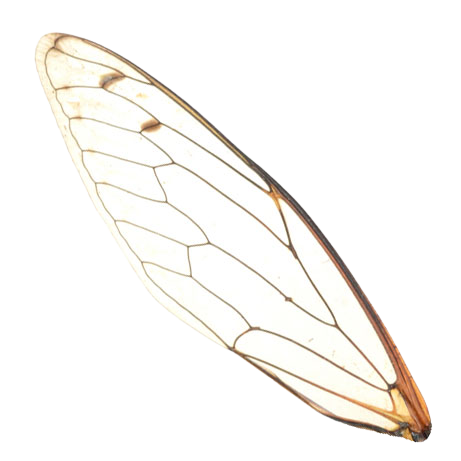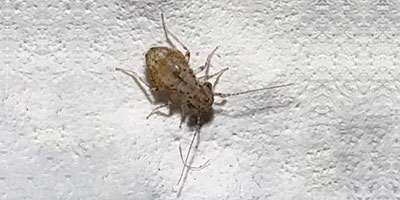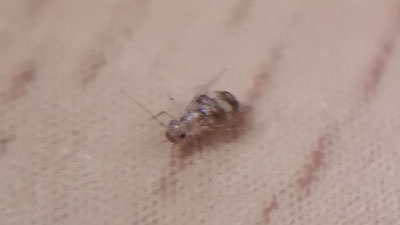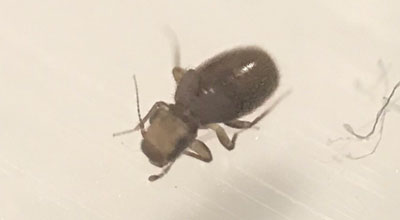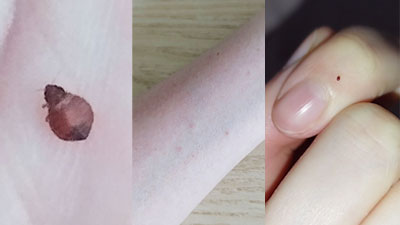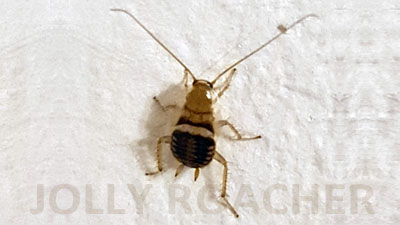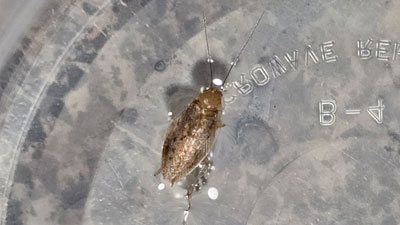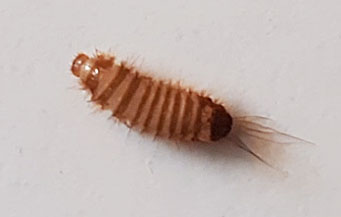After publishing my video with black booklice Lepinotus patruelis, the flow of letters with the same insects has increased significantly. Some of the booklice in the photos and videos from viewers are completely black, some are dark brown, but they are all definitely booklice. It is enough to know this when you meet them at home, so as not to worry too much: they are not parasites, they do not bite people, and therefore you need to fight them in about the same way as cockroaches.
Here is that video with the black booklice, similar to Lepinotus patruelis:
However, viewers of my channel cannot always recognize such black booklice. I’ll show a typical example below in one of the photos: Google Lens confidently writes that there is a bed bug in a photo with such a Lepinotus patruelis, and misleads a person (and drives him into panic).
Therefore, it is useful to know what exactly black booklice look like and how to distinguish them from both bed bugs and other insects. I have collected photos of these pests here and will add to this collection as I receive new letters with them. Take a look at them and compare them with the insects you find in your home – you will almost certainly recognize your neighbors.
The very same black booklouse from the video
A viewer sent me a video of this booklice asking if it was really a bed bug. Apparently, he was confused by the dark coloring of the insect and it was because of this dark color that he mistook it for a bed bug.
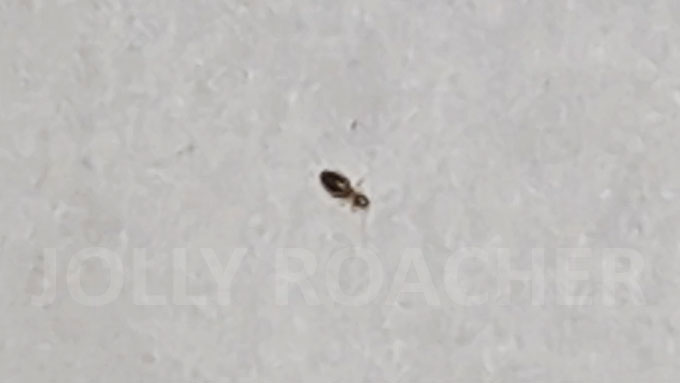
Even in such a blurry image, you can clearly see that this is not a bed bug. The insect’s abdomen is too long, its head is too large and too clearly delimited from the body. Bed bugs are much wider and more compact.
It is interesting that four months before the letter with this video, the same viewer sent me other photos of similar dark booklice. Here is one of them:
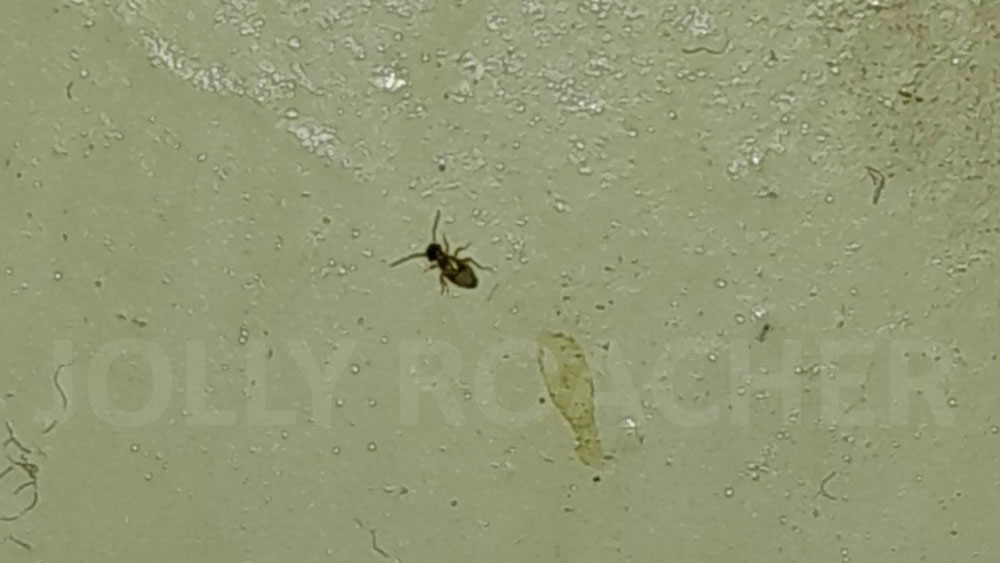
They have very noticeable spots in the abdomen. Moreover, these spots even form certain patterns:
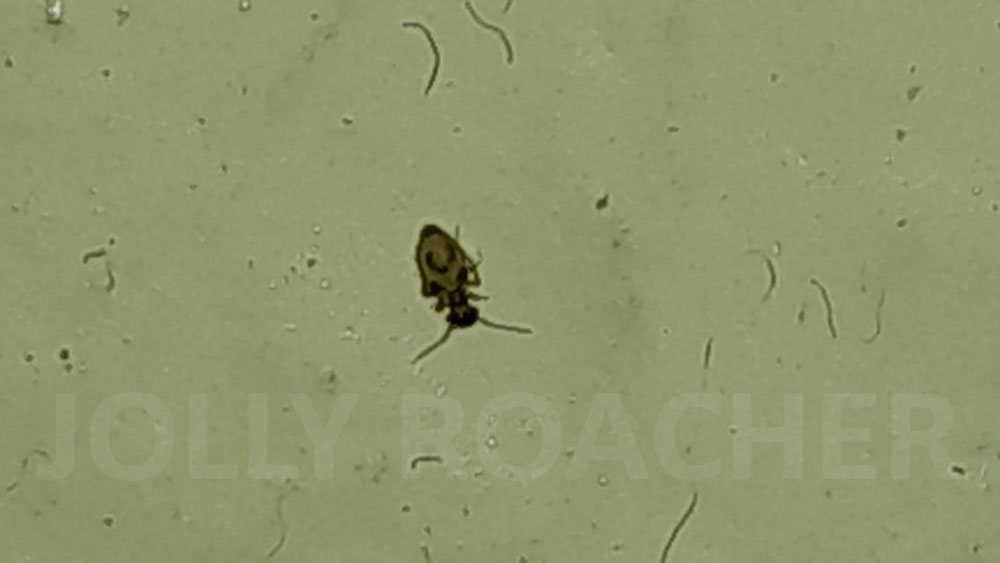
Such expressive spots are typical for females of the Lepinotus patruelis species – they have spermatophores in the abdomen that are usually visible in the form of such spots. However, it is doubtful that the spermatophore has such a shape as in the insect in the photo.
And in other photos of these same booklice, such spots even look large, like wings:
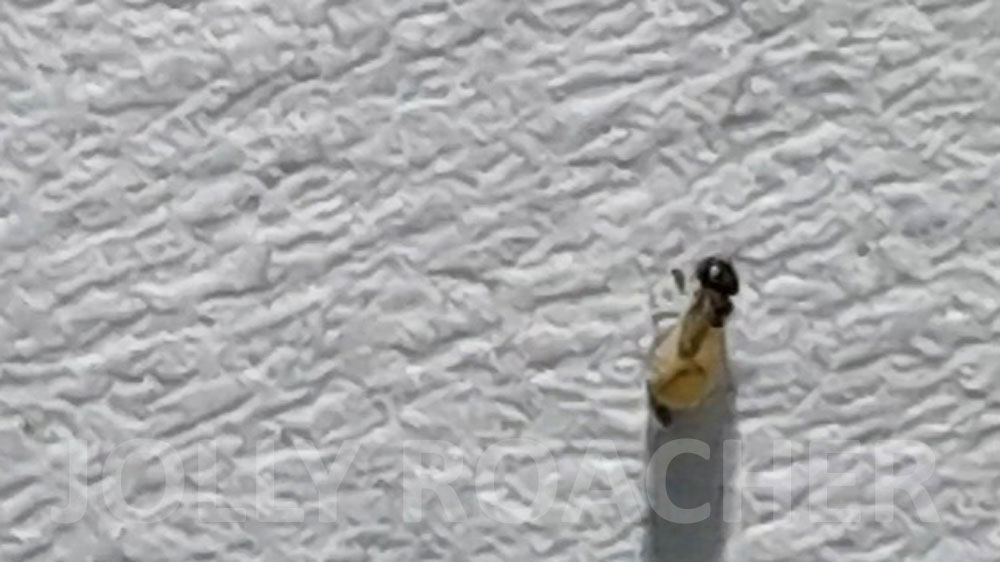
However, this is probably just a distortion of the image made by a phone camera, trying to photograph a very small insect in low light. Booklice have either translucent or mesh-patterned wings, and matte yellow wings like the spots in the photo are not typical for them.
In other photos, the insects look exactly like the granary booklice Lepinotus patruelis:
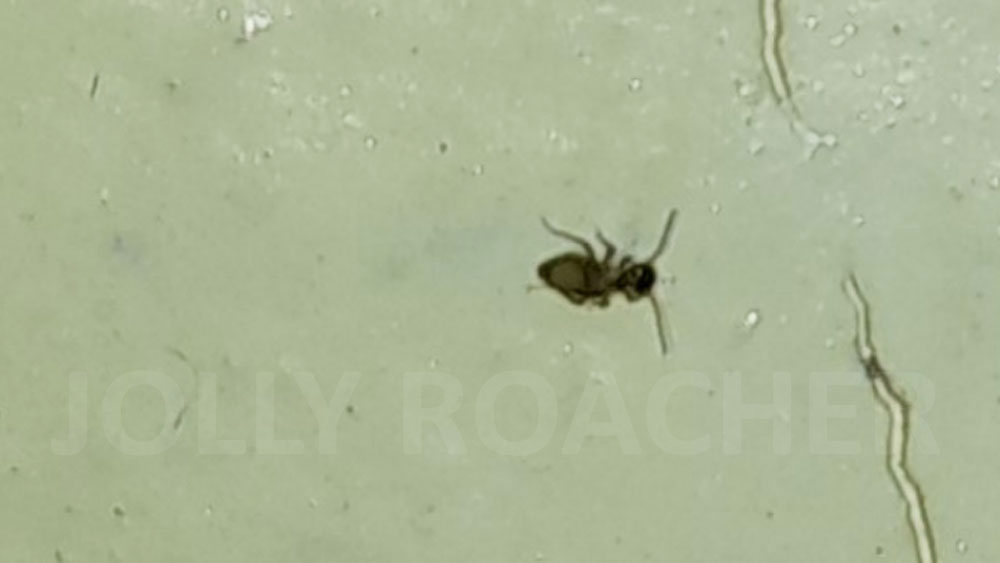
However, even the highest quality picture from the viewer does not allow us to identify the species for sure:
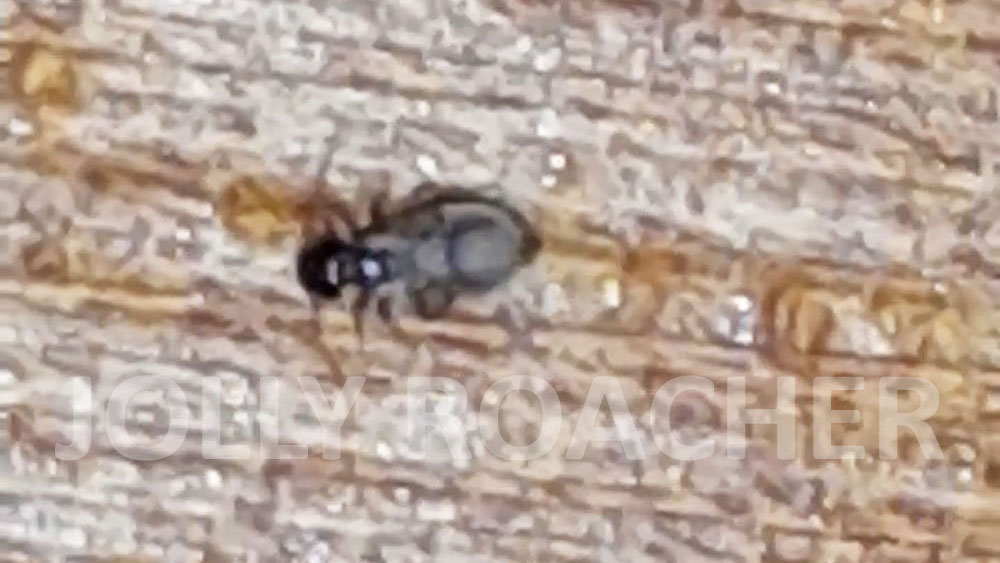
In any case, for apartment conditions it is enough to know that these are booklice, even without specifying their species, in order to choose an effective strategy to get them out of the house.
Typical Lepinotus patruelis in the photo
But in this photo it is almost certainly Lepinotus patruelis:
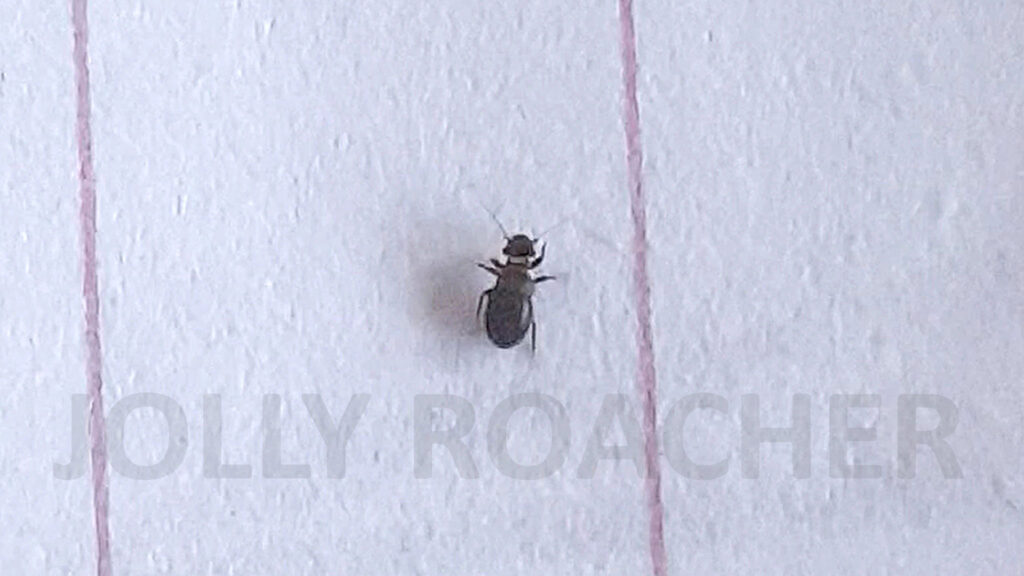
The girl wrote that she photographed this specimen on her daughter’s bed and is very afraid that it is a bed bug.
In fact, it clearly a booklice not only judging by its body shape: it also has protrusions on the upper part of its abdomen – these are reduced wings. Together with the dark color, they clearly indicate that this is a representative of the granary booklice Lepinotus patruelis – it is their wings that are strongly reduced, but do not disappear completely.
The girl also noted that mold had been growing in the child’s bedroom for some time and she suspects that these insects feed on it. This is quite likely: mold is one of the food sources for booklice, although not the main one. Where it appears, booklice may well appear, as well as some other mold eaters – springtails, for example, or woodlice.
Granary booklice from a damp motorhome camper
These dark brown booklice settled in a camper van that had been in storage over the winter and, according to the owner, get a little damp:
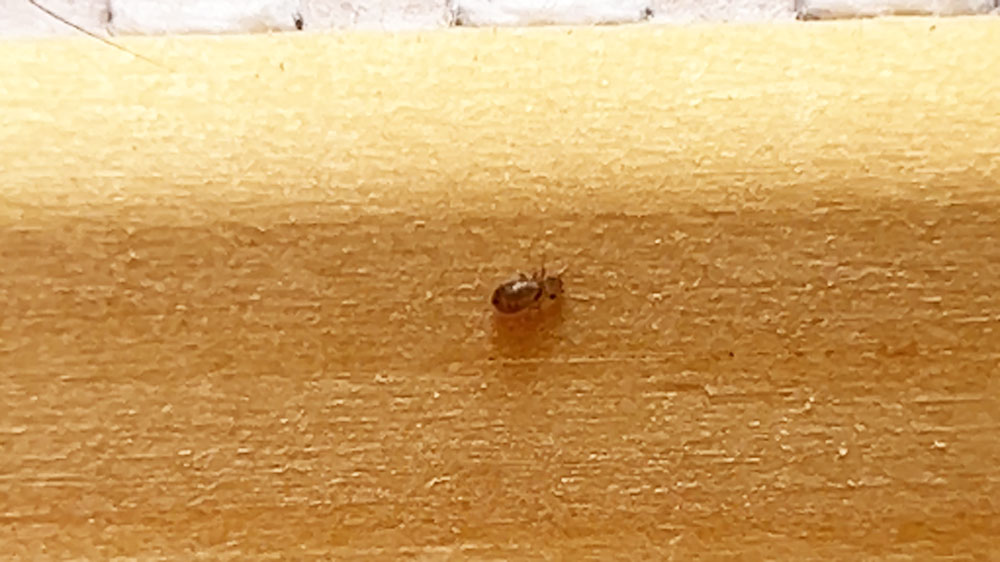
The girl writes that there are a lot of wooden and bamboo parts, many glue joints in the van, and all of this has absorbed moisture during storage. And in the spring, when she rolled this camper out into the open air and began preparing it for trips, she found that it had already been inhabited:
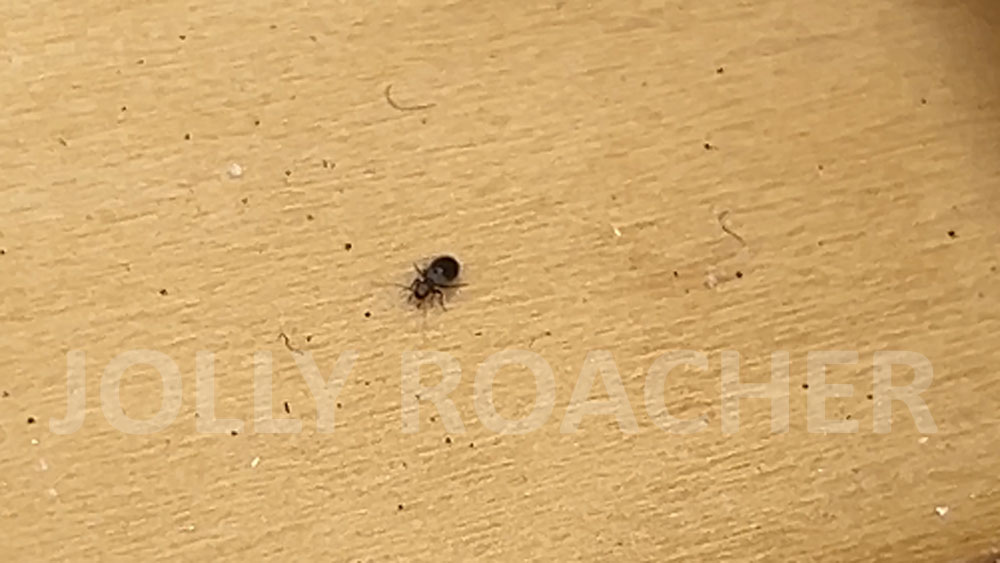
Like most other booklice, Lepinotus patruelis and other similar species with black coloring really like wet surfaces and damp rooms.
For example, half of the letters with psocids from the genus Dorypteryx are sent to me by people who have done renovations and moved into apartments in new buildings – many such newly built houses get inhabited by booklice at the construction stage. After all, there are a lot of damp finishing materials that attract these insects. And the problem is that even after owners normalize the humidity by using special air dehumidifiers, the booklice do not go away from such rooms and mobile homes. And people have to fight them with standard methods – insecticidal sprays and glue traps.
Black Lepinotus after a hearty lunch
This is the specimen one girl photographed on the wall in the bathroom:
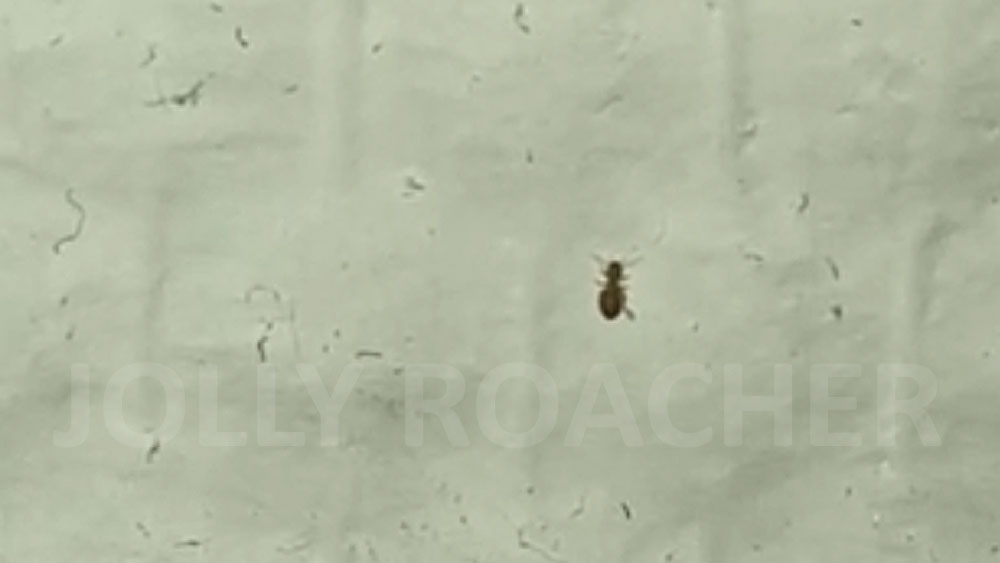
She wrote that in the photo the insect seems a little darker than it actually is, and suspected that it was a common book louse. I showed some of them in a separate video:
She wrote that the insect appears a little darker in the photo than it is in reality, and suspected it was a common booklouse. I have shown some of them in a special video:
However, for a common booklouse Liposcelis divinatorius this specimen is too dark, even if we take into account the fact that it is lighter than in the photo.
Perhaps the girl was also confused by the fact that the insect in her pictures has a too long abdomen, while typical Lepinotus have a shorter one, and appear more compact.
That is normal: if these insects find food after starvation for a day or two, they eat a lot, and in the process of satiation their abdomen stretches. They move a little slower after that, weighed down by their full intestines, and some even freeze in place for a couple of hours until they have digested the food a little. Such overfed individuals seem a little longer than their more nimble hungry counterparts. This is a peculiar habit that modern Psocids may have inherited from their ancestors living in wild caves, where food is very scarce and each source must be used as carefully as possible, eating as much food as fits in the belly.
Brown booklouse from Singapore
This is one of the many booklice that a guy from Singapore found in a clothes closet in his apartment:
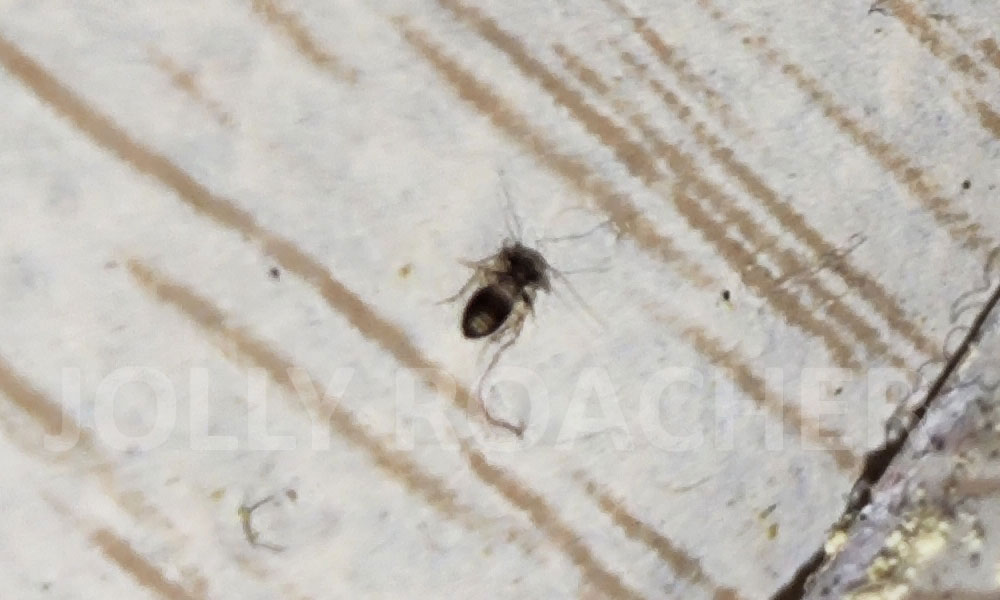
Note that the insect has clearly visible wings, which strongly distinguishes it from any members of the genus Lepinotus. In the video this booklouse even visibly moves its wings, while it seems to be eating something.
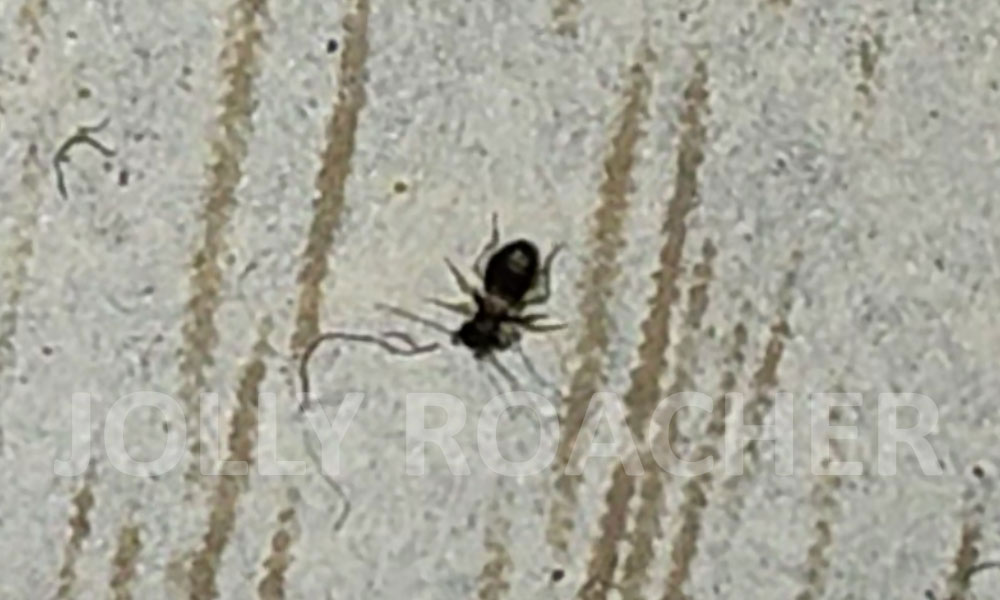
Experts from inaturalist.org helped me with identification of this species. One of them suggested that it might be Psoquilla marginepunctata, since the insect’s pose is characteristic of this species. But he noted that because of the poor quality of the photo, it is impossible to see the details of the color and structure of the insect, and it is impossible to identify its species with certainty
The owner of the apartment was surprised by the fact that these insects were running around the wardrobe in large numbers, despite the fact that there was nothing edible in it. But this is not a unique situation: barkflies often breed behind the wardrobes, under them, or behind baseboards, and they climb into the wardrobes in search of something edible. And perhaps if the author of these photos had moved the wardrobe away from the wall, he would have seen many more booklice than he found in the closet.
Typical Lepinotus patruelis mistaken for bed bugs
But this girl’s booklice are typical Lepinotus:
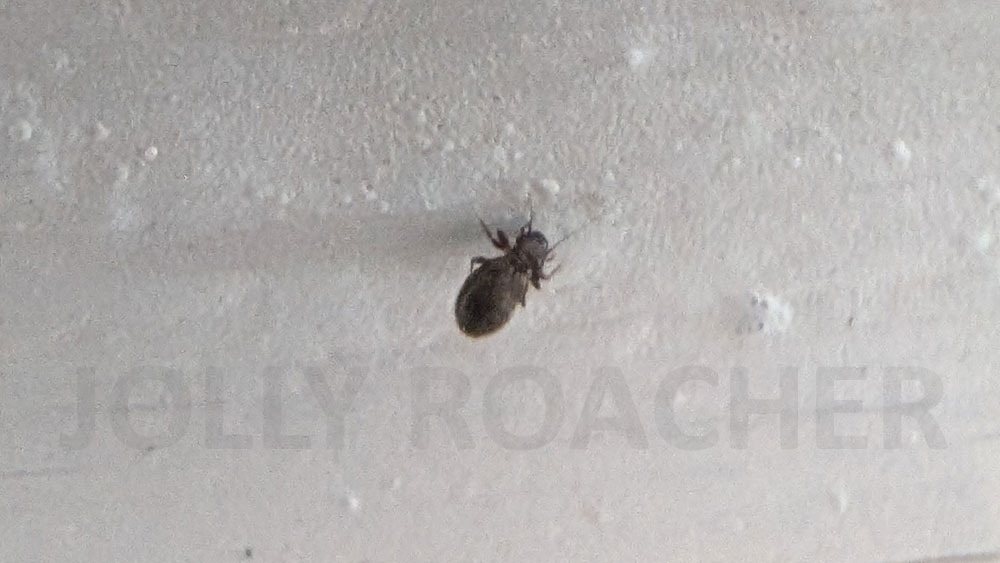
Here all the features match: the color, the clearly visible reduced wings, and even the size.
The girl writes that they run all over the apartment and she notices them on the walls, in dusty corners, and on the walls of furniture.
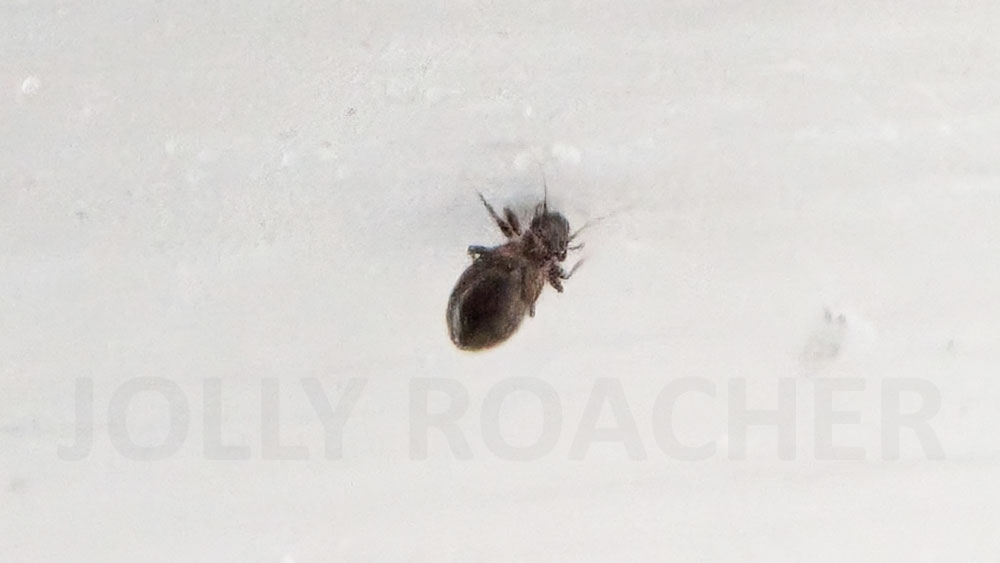
At the same time, she notes that she does not find their excrement or any other traces of their life activity anywhere. No wonder, because they spend most of their time where no one can look – behind baseboards, under furniture and in cracks along the flooring.
By the way, pay attention to the rather wide head with large, clearly visible eyes:
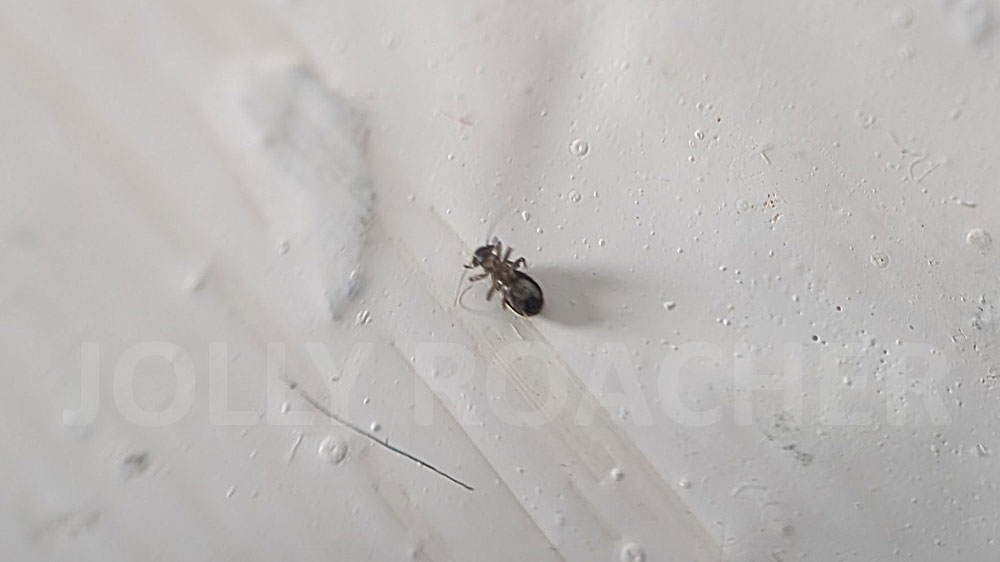
This is a legacy of Psocids from their ancestors, which lived in dark bird nests, rodent burrows and caves, where they had to search for scarce food in conditions of weak (or completely absent) lighting.
And of course, all these details of the structure can be seen only at a very close look – Lepinotus patruelis are very small.
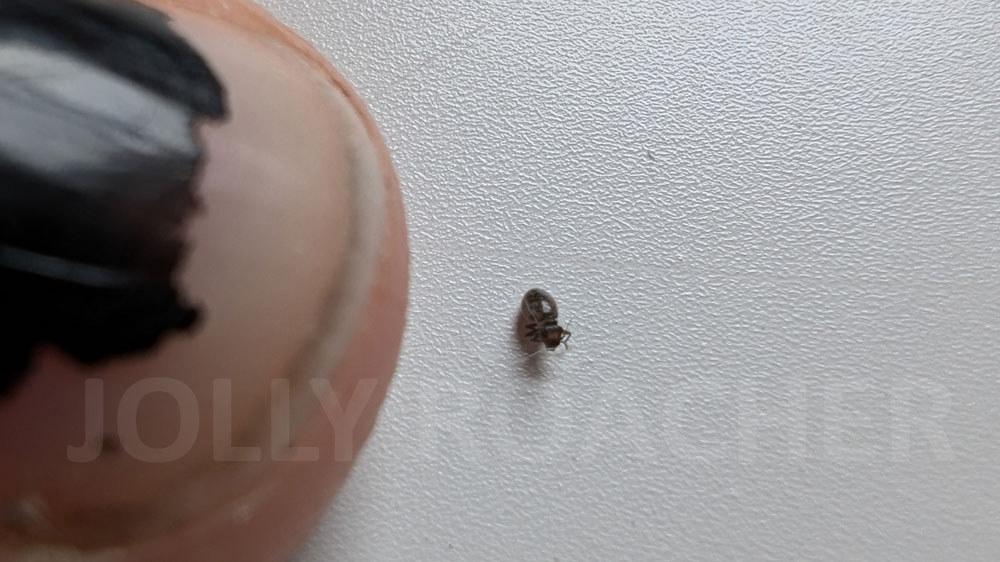
The author of these photos writes: “They are super small. I could barely see them with my magnifying glass.”
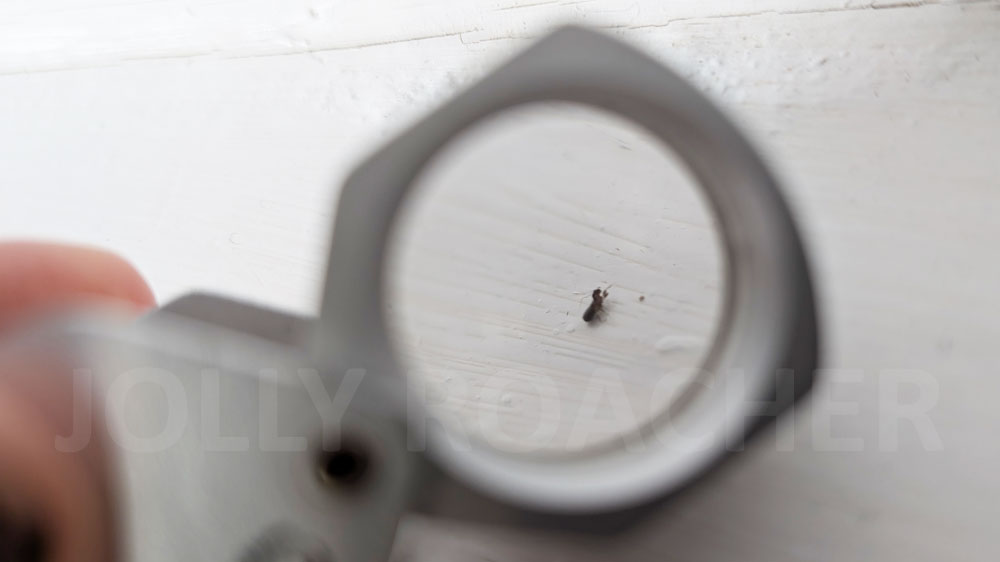
Nevertheless, even at this size, these specimens show the details necessary for recognition: a large head, noticeably separated from the body, six legs and a black coloration.
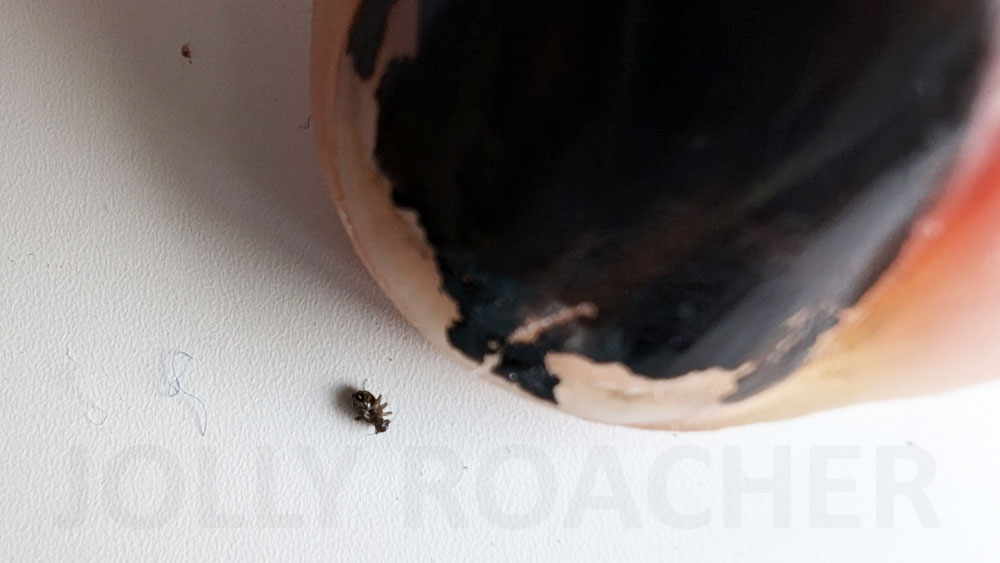
This photo even shows the jaws, typical for booklice – massive and protruding in front of the head:
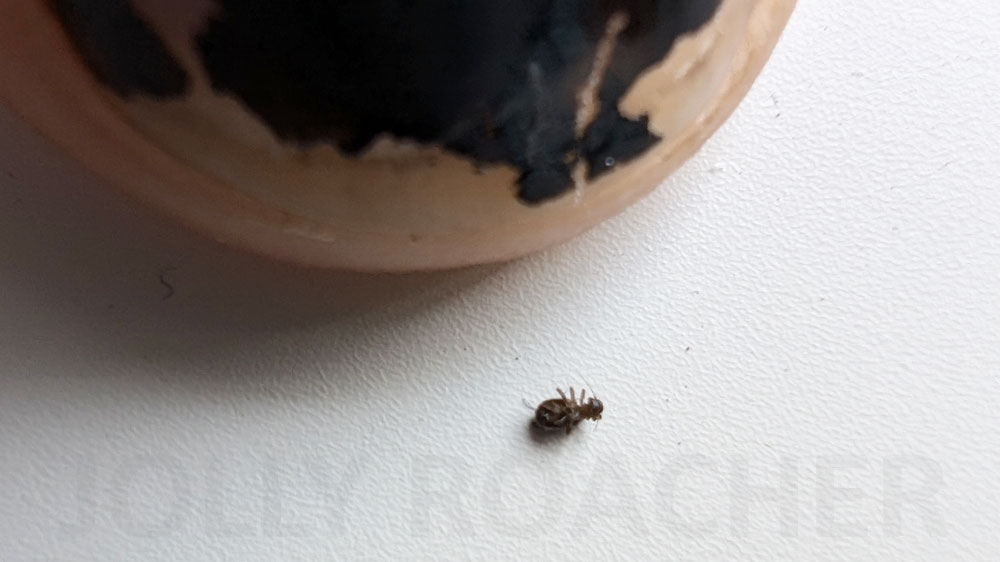
And here you can clearly see that the length of this individual is about 1 mm:
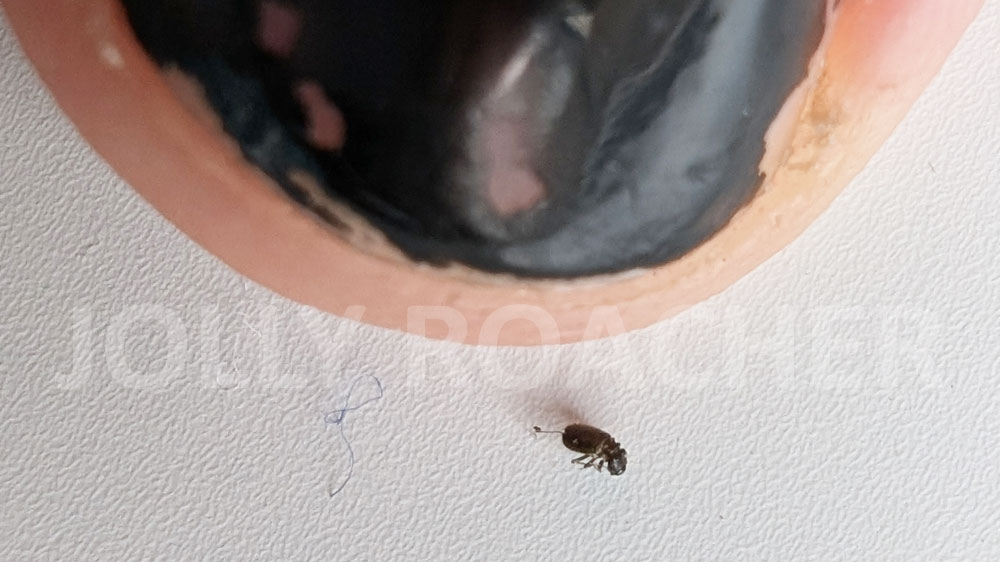
This, by the way, is another way to reliably distinguish granary booklouse from bed bugs: in bed bugs, only the first instar nymphs have such small sizes, and their body color is light – either yellow or light brown. Small bed bug nymphs are not as dark as the average Lepinotus specimen.
As a result, the insects were identified with sufficient accuracy and their happy owner was calmed down and no longer worried that something might be biting in the middle of the night.
A few more photos of Lepinotus patruelis to estimate their size
And here is the same Lepinotus, but from another apartment, right on the edge of the sink or bathtub – it is not entirely clear from the photo. The main thing is that the booklouse itself is recognizable:
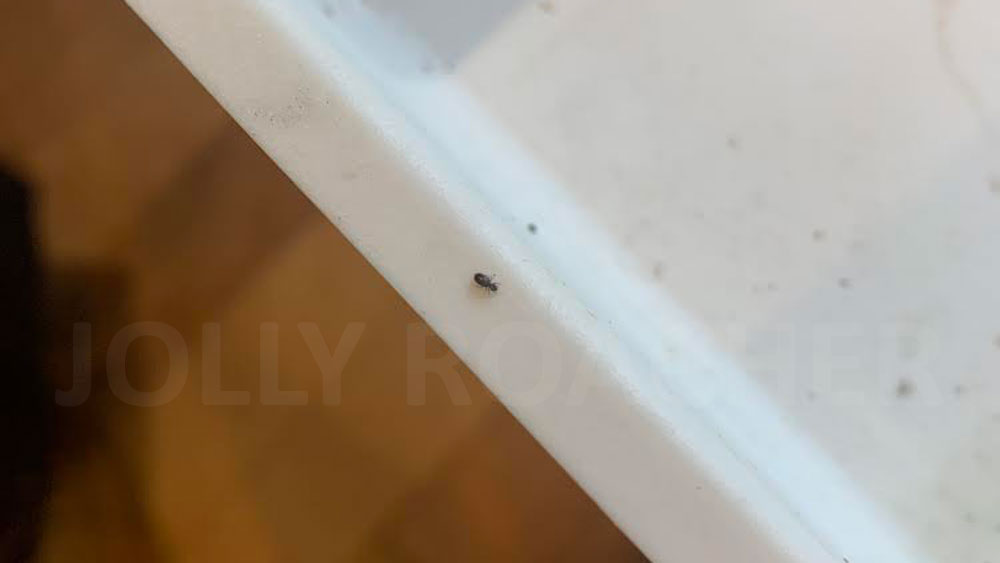
Note again how small it is.
The girl writes:
They crushed very easily. Constantly run everywhere, but do not fly. They are indiscriminate in the materials to run. I see them everywhere: on the floor, on the wall, on wooden surfaces, on fabric, plastic, but they seem to gravitate towards rattan (and maybe even nest in it). They seem to have a developmental stage where they are very light colored. In general, they have filled my kitchen cabinets and furniture.
Here is the very same individual that the author mistook for a separate developmental stage:
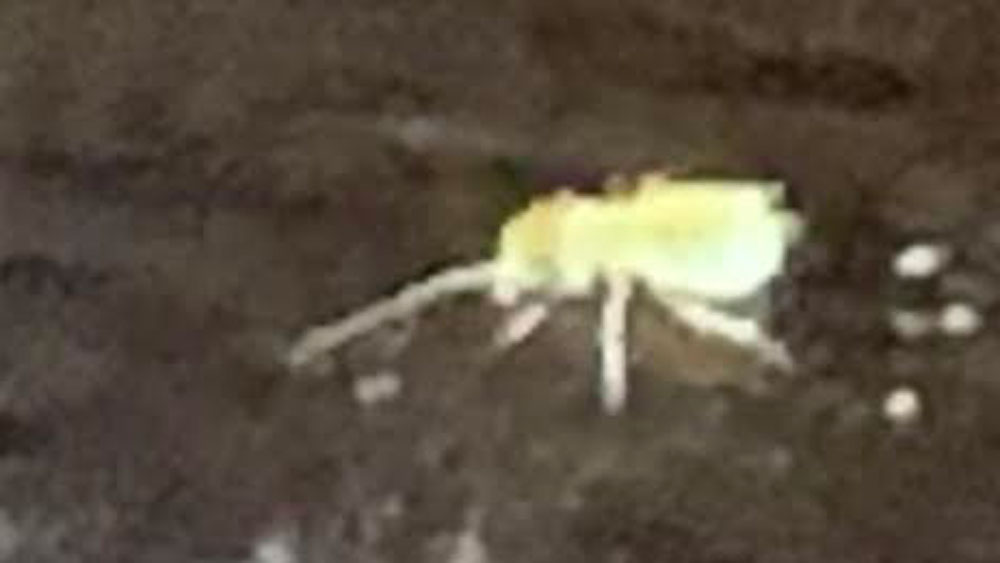
However, it is very difficult to recognize the insect from such a photo and conclude for sure that it is a nymph of the granary booklouse.
Therefore, it is the adults of Lepinotus patruelis that is reliably identified:
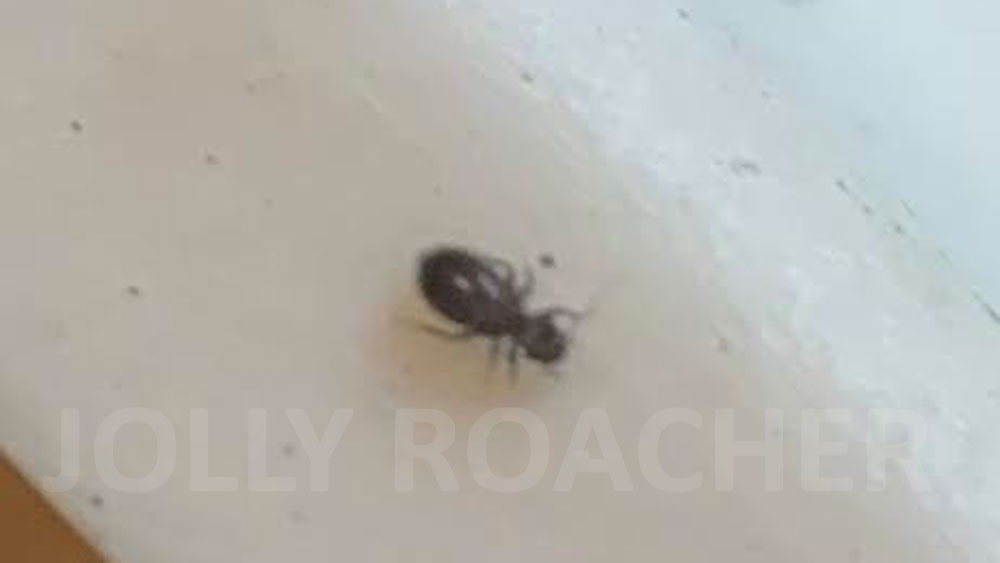
The silhouette of the insect is especially clearly visible in good light on a light background:
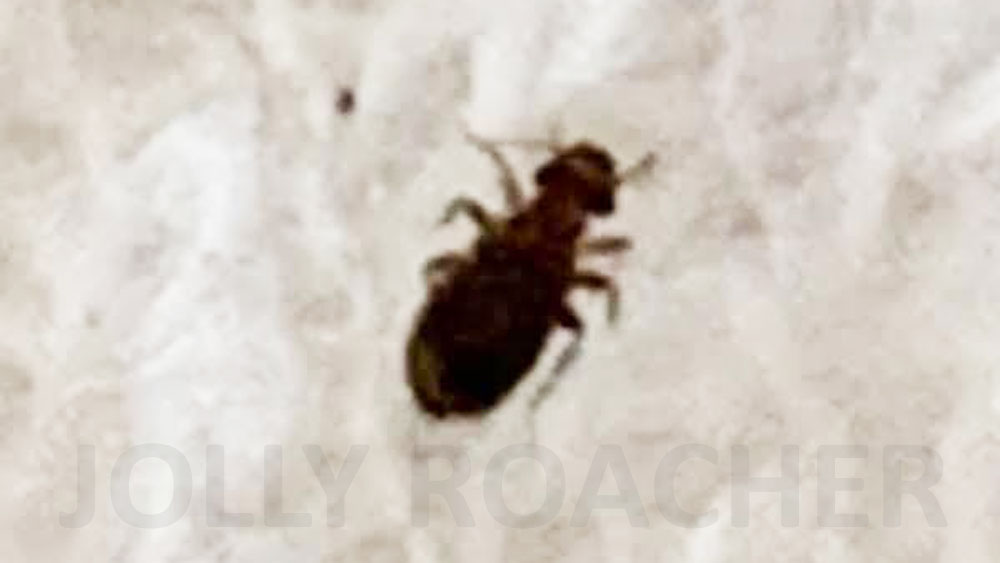
It is noteworthy that Lepinotus patruelis, as typical pests of granary supplies in warehouses and elevators, are well established in kitchens and living quarters, which are usually cleaner and better maintained. Apparently, they are not too picky in their choice of food and therefore find plenty of food in apartments.
Colonizers of picture frame
These booklice my viewer found in his home on picture frames bought in an online store:
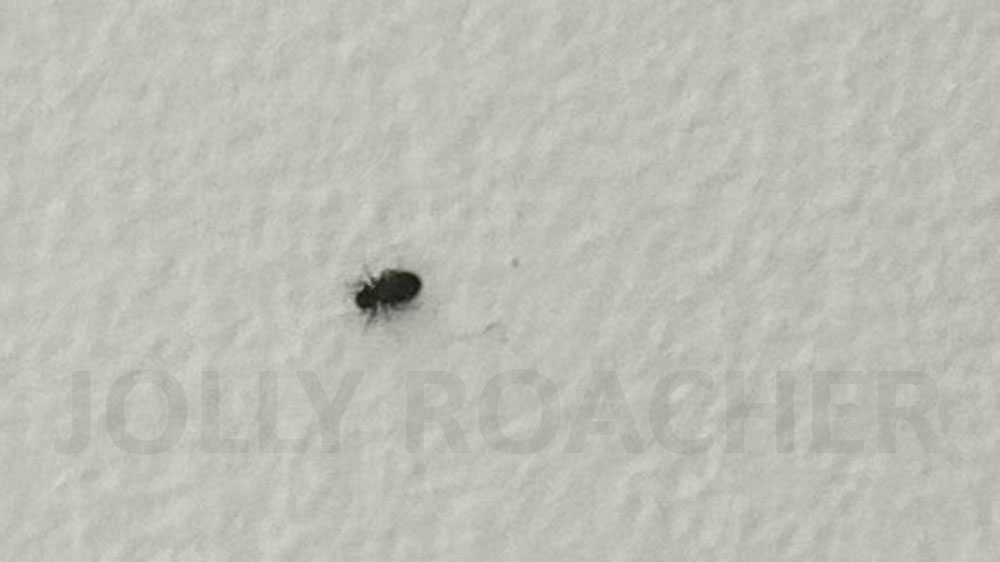
He suspected that the seller had made these frames from fresh wood, because greenish stains began to appear on it. And tiny black bugs started running around this piece of wildlife.
The man was worried because he had just done renovations and installed natural wood furniture in the house and thought that these insects might be wood-boring beetles, whose larvae live in wood and spoil it.
Fortunately, from his photos we can tell for sure that these are definitely booklice and definitely not wood-boring beetles.
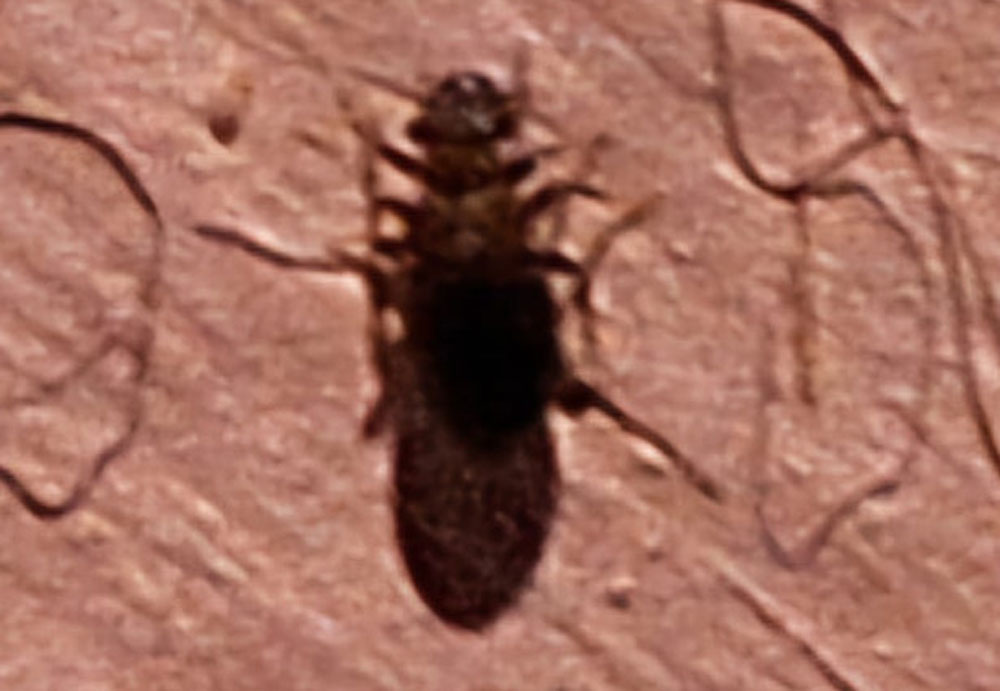
Most likely, they are not tied specifically to picture frames and wooden furniture. Perhaps they are simply easier to spot on these objects than on other surfaces. Especially since the author mentioned in the letter that after finding insects on wooden items, he began to notice them in other places in the house.
A rare case: booklice in books
It’s quite funny, but booklice are rarely found in books. In fact, these insects are not tied to books, and got their name because they used to spoil books with old bindings. Such bindings were manufactured using natural-based glues, and the booklice used to happily feed on it.
Modern books do not use such natural glues, and therefore booklice have nothing to do with them.
Nevertheless, one viewer sent me a photo and video of booklice in a book:
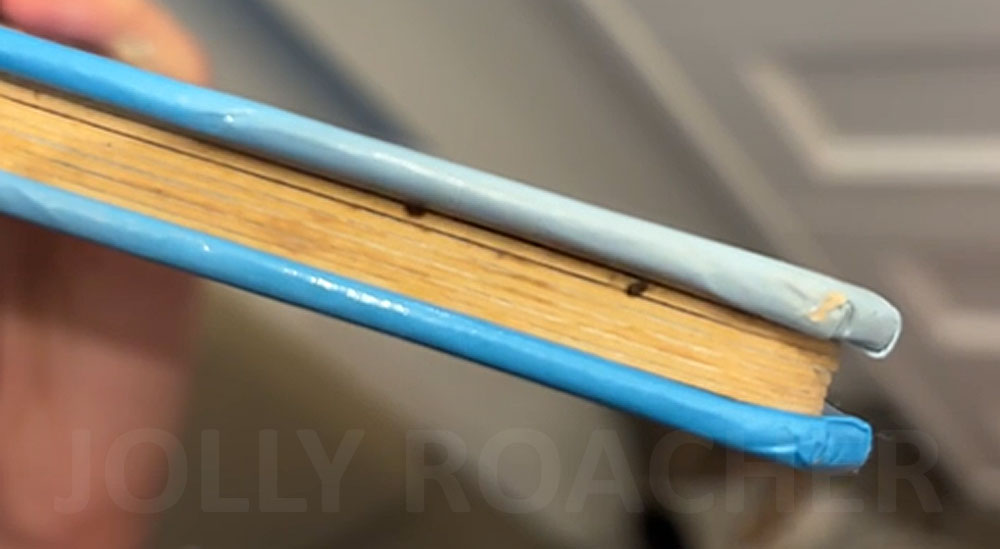
She also initially thought that these were bedbugs, since she found the book with the insects under the baby’s crib. But then she checked the crib itself and found no insects on it. And there were no bites on either the child or her. So she decided to be sure and write to me to clarify the situation.
Here, near the book cover, it is very convenient to estimate their size:
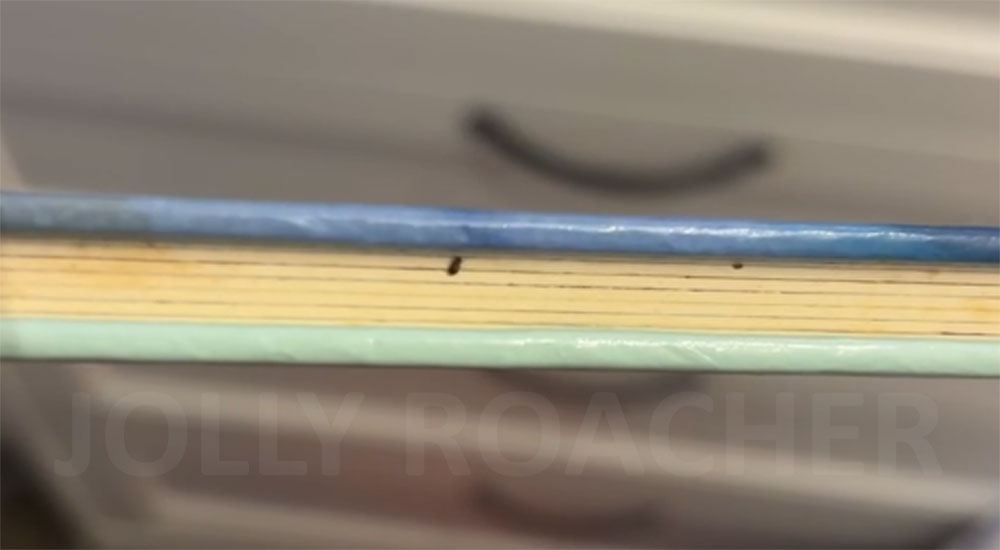
At the maximum zoom available on her phone, the insect looks like this:
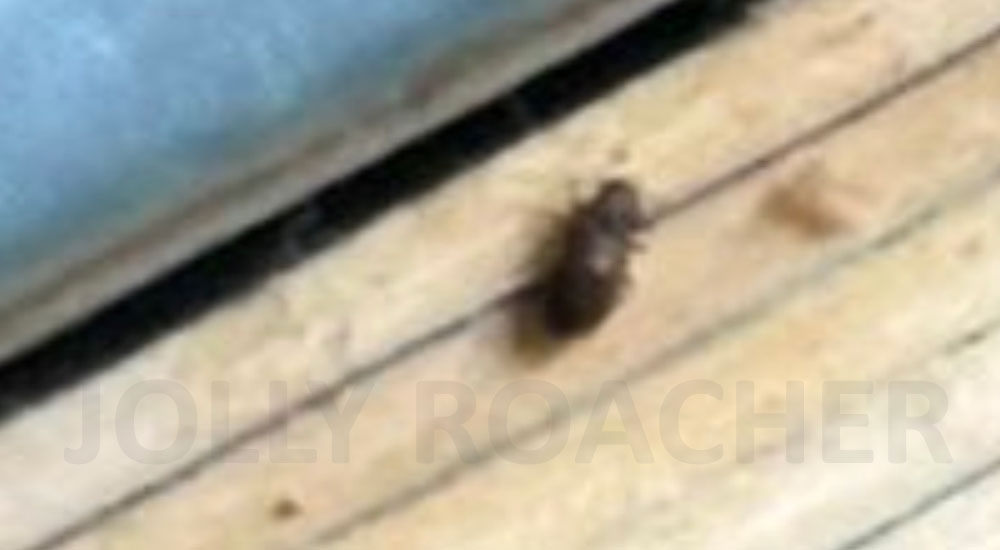
It is impossible to say with absolute certainty that this is Lepinotus patruelis. But these are definitely booklice, and this is enough to take the right measures to control them.
Lepinotus patruelis from England
This is probably one of the best photos of Lepinotus patruelis I have received from viewers:
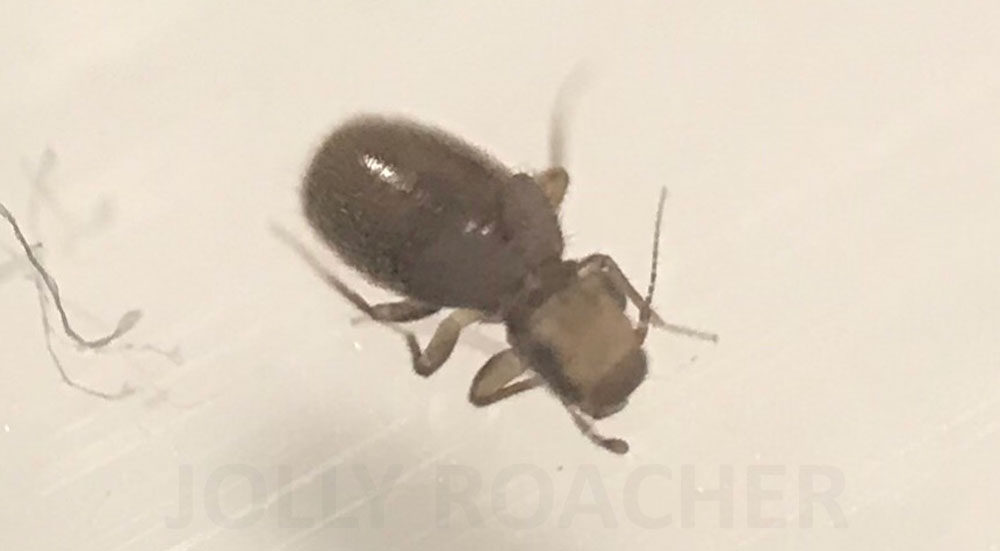
This is a booklice from a house in the UK, and the owner of this house writes that he and his wife are desperate, because these insects reproduce faster than they can be exterminated. It has gotten to the point that people have decided to move out of this house and are taking measures to avoid transporting booklice in their belongings to a new home.
But if you abstract from these everyday vicissitudes, then in the photo you can very well see the wings and powerful jaws of this booklouse. If you can see such an insect as it is seen in this photo, then you can definitely identify it as Lepinotus patruelis.
How Google Lens makes misidentifications
This story sheds light on why people mistake book lice for bed bugs. Here’s a screenshot viewer sent me for identification:
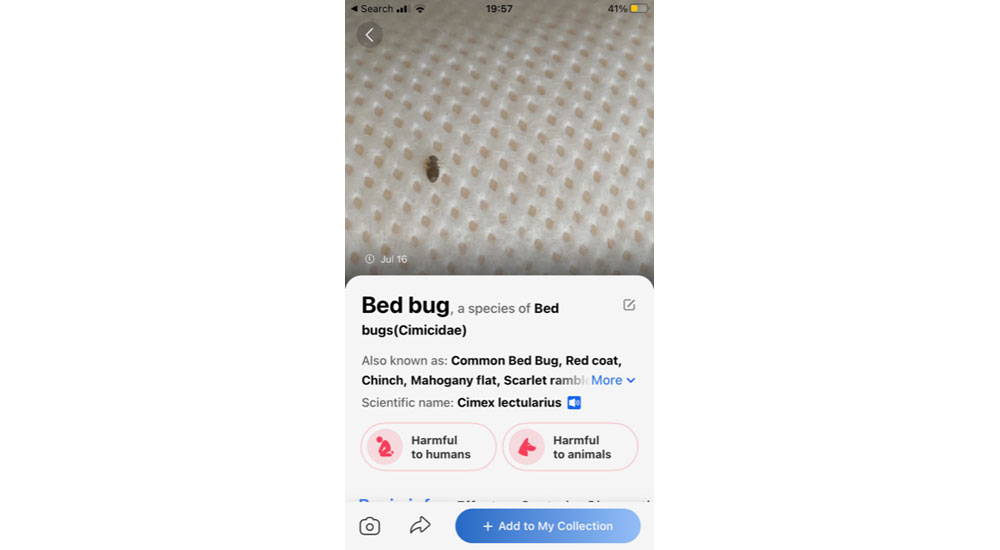
Here you can see that in the photo with the insect, Google recognizes it as a bed bug. At the same time, the author of the photo writes that he found the insect on an old mattress which was stored in the house, but on which no one slept.
It’s no wonder, in fact, that Google mistook this insect for a bed bug: a dark brown insect with clearly visible segments on its abdomen, sitting on light fabric (most likely on a bed, according to the search engine). But that’s what an algorithm is for: it gives the most likely, but not necessarily the correct option.
The second photo from the same viewer shows the same insect, but from a different angle, and it doesn’t look like a bed bug at all, but very much resembles a booklice Lepinotus patruelis:
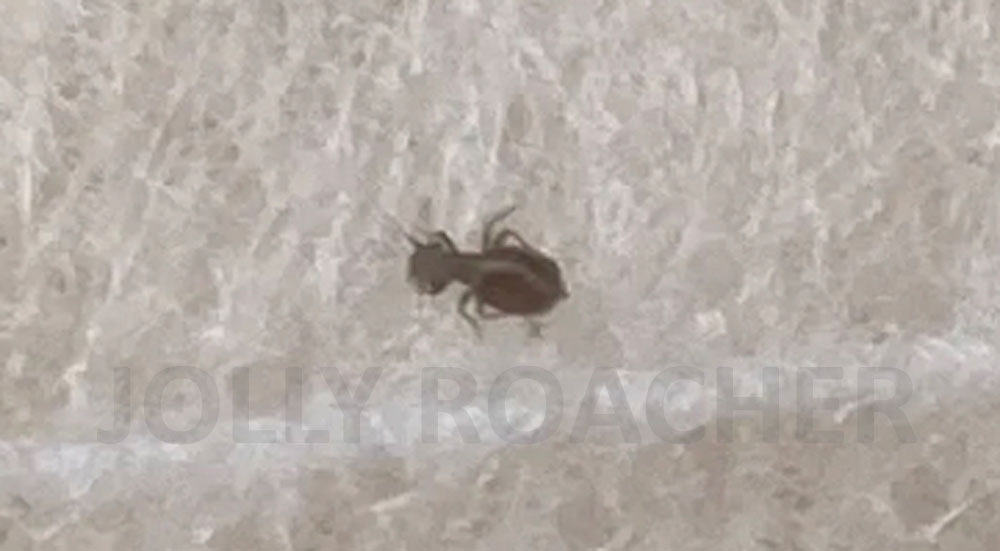
Indeed, this is a booklouse, and almost certainly a Lepinotus. But imagine how many nerves a person lost when he or she got such identification results from Google Lens! So when you use this tool, keep in mind that sometimes it can be wrong.
Another black booklice which had been recognized after the viewer watched the video
This photo was sent to me for confirmation – the author watched my video, suspected that the insects in his house were booklice of the genus Lepinotus, but decided to write to me to confirm his independent identification:
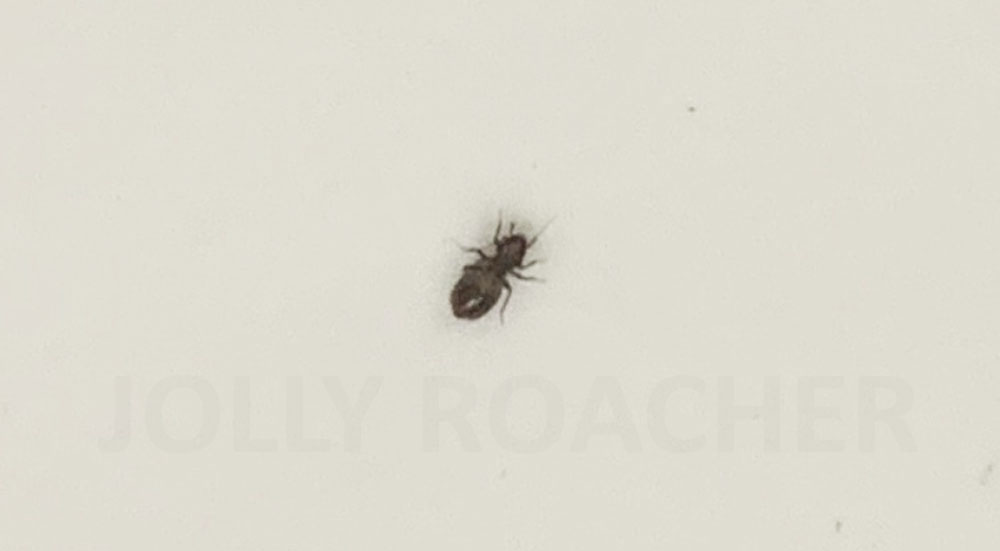
This is indeed a Lepinotus, and therefore it is quite normal for it to be found in a residential building. Any inhabited dwellings – private houses, apartments, and even basements, manholes and sheds – are in any case more comfortable for them than their natural habitats: damp dark caves with very little suitable food. So little, in fact, that the insects literally save every calorie, and the females of these booklice are forced to chase males and forcibly mate with them to get a scarce portion of protein-rich reproductive products. This has led to a perversion of sexual roles: male booklice choose females, while females hang around them and are ready to mate with anyone that pays attention to them. In some related Psocid species, this role reversal has reached the point where females have developed an elongated genital organ, which they insert into the male’s body cavity to obtain the coveted sperm. And in such a copulating couple, it is the female that will be on top and the male – below.
A typical photo for recognizing an insect – definitely with a booklice, but it is not clear which one
Such photos are the most often sent to me for identification:
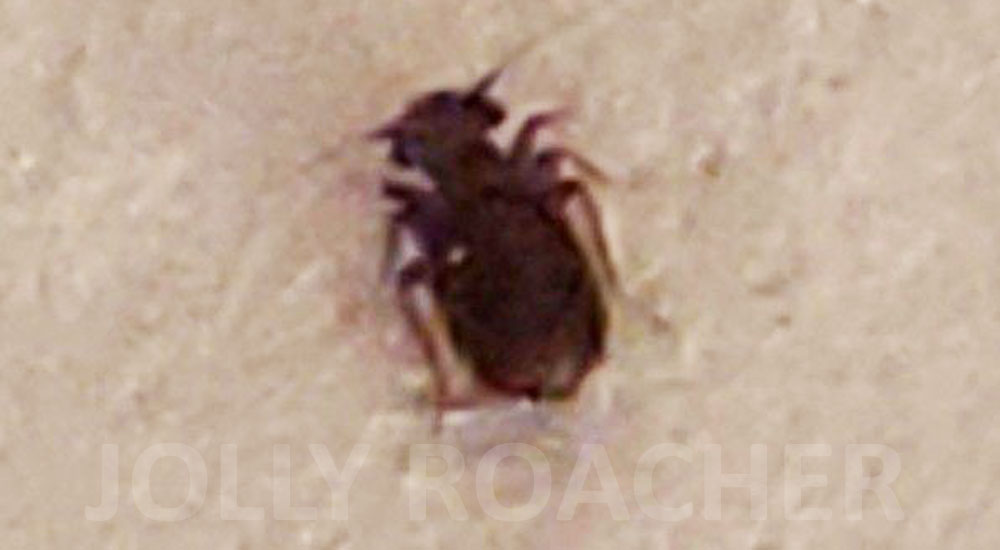
It is quite clear from them that this is a booklice, but it is not possible to identify the species with any certainty. At the very least, due to poor lighting, it is not even clear whether this booklice is brown or lighter – maybe it is simply in the shade. If there are patterns on its body, they are not visible, which also does not make identification easier. And in addition it is not possible to estimate its size.
In any case, for household purposes, it is enough to know that we are facing a booklouse. There is no need to specify either the genus or, especially, the species – in apartments, all booklice lead approximately the same lifestyle, and the measures to combat them are identical for all species.
But if you decide to send me a photo or video for identification, then try to take them so that the insects (or other arthropods) on them are in focus and so that you can see the details of the coloring on picture. Ideally, take at least one more photo with a general plan, in which the insect will be albeit small, but next to some object of a recognizable size – it will allow me to estimate its size. All this will help to identify your unexpected pet.
And send me the videos and photos you have already received, and together we will figure out what a surprising thing settled in your well-kept home.
